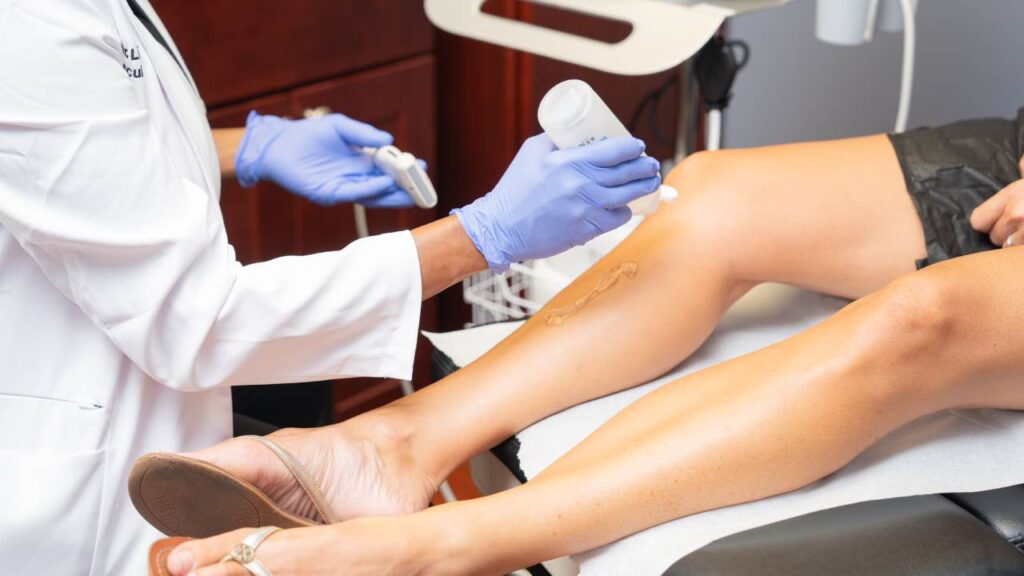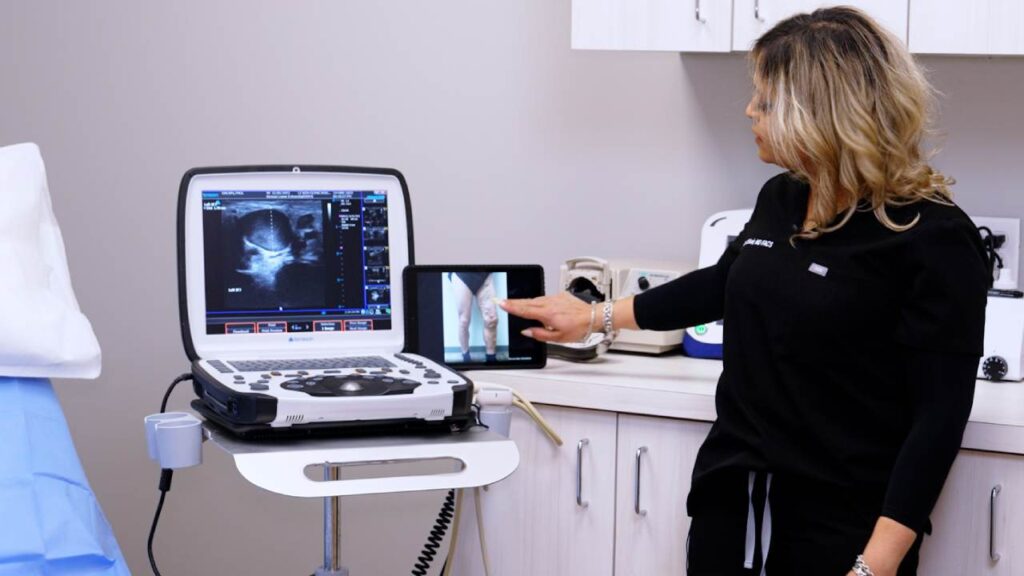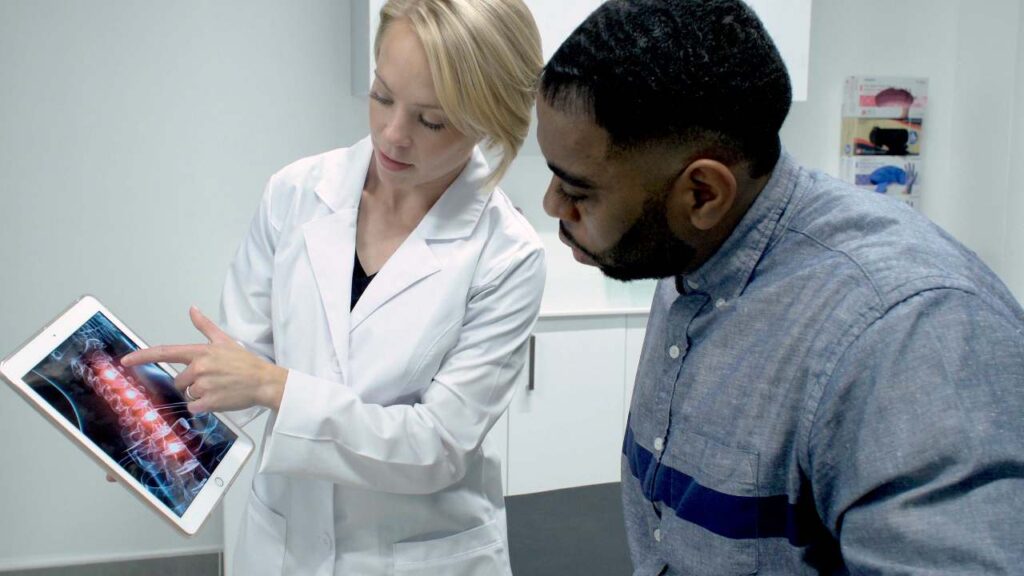Diagnosis and Treatment of Wrist Pain Doctor | Pain Management Physician Answers

Wrist pain refers to any form of pain or discomfort in your wrists, which may be caused by a fracture or sprain, overuse injuries like tendonitis, or other long term issues like osteoarthritis or Carpal Tunnel Syndrome.
Some of the symptoms of wrist pain include a suddenly swollen vein in wrist, hand joint pain, wrist and thumb pain, sore wrist, swollen or bruised wrist, stiffness around the fingers, or increased joint pain thumb pain and tingling or numbness in the hand and forearm.
If you have any of the aforementioned symptoms, you’re suffering from wrist pain and need to see a wrist pain doctor.
In this article, we discuss how do you know if you fractured your wrist and how to assess, diagnose, and treat wrist pain. We’ll also discuss where you can find the best wrist pain doctor in 2019.
How do you know if you Fractured your Wrist?
Wrist pain doesn’t necessarily indicate a chronic condition. Your wrist may be hurting because you’ve fractured or broken in. The following are some signs and symptoms of a fractured wrist:
- Intense pain that worsens when you move your wrist.
- Sudden swelling in the wrist.
- Tenderness and a tingling sensation.
- Bruising on the wrist.
- Visible deformities like a bent wrist.
Your wrist may be fractured or injured because of activities that involve repeated wrist movements like tennis, bowling, or long periods of driving, or because of a sudden impact or blow.
Why does my Wrist Hurt?
If your wrist isn’t fractured or injured, it may be hurting because of the following underlying conditions.
Osteoarthritis
Osteoarthritis is a degenerative disease that affects your joints, including your wrist joints. If you’re suffering from osteoarthritis, the cartilage covering the ends of your joints gradually wears off. This cartilage allows your joints to glide over each other and it absorbs the shock of movement. Without the cartilage, you suffer from wrist pain and stiffness.
Tendonitis
Overuse injuries like tendonitis, also known as De Quervain’s Disease, is a condition in which the tendons along the thumb get inflamed and swell up. This causes weakness all along your wrist and thumbs and a grating sensation within the wrist.
Bursitis
Wrist bursitis is a condition in which the bursa (fluid-filled sacs) inside the wrist joints that offer cushioning get inflamed. This leads to wrist and thumb pain, redness, inflammation, and swelling.
Carpal Tunnel Syndrome
This is a condition in which the ligament thickens and applies pressure on the wrist nerves, which leads to numbness, wrist pain, and weakness. This usually occurs when you engage in repetitive activities like lifting and typing.
Ganglion Cysts
This is a condition in which fluid-filled cysts form on the surface of your wrists, which leads to immense pain and an inability to hold objects.
Kienbock’s Disease
This is a condition in which one of the eight small bones in the wrist called the lunate bone loses its blood supply and eventually dies. This is an important bone that helps with movements, mobility, and supports the joint. Without it, you suffer from intense pain in wrist and hand.
Diagnosing the Root Cause of Wrist Pain
If you go to fellowship-trained and nationally-recognized experts in interventional pain management, they’ll diagnose the root cause of wrist pain before curating a treatment plan.
As you can see, wrist pain may be caused by a wide range of issues. It’s important to understand exactly why your wrist is hurting before proceeding with treatment.
You should avoid doctors who don’t diagnose the root cause of wrist pain and simply recommend surgeries or opioids. Surgeries aren’t suitable because they’re complicated and risky. And opioids don’t treat the root cause of wrist pain and may lead to an addiction, so they should be avoided.
Interventional pain doctors or specialty-trained wrist doctors will use various diagnostic methods before treating wrist pain.
- Physical Examination: The wrist pain specialist will first inspect your wrist for signs like swelling, tenderness, pain, mobility, etc.
- Imaging Tests: The pain doctor will proceed to screening and imaging tests to identify underlying issues or fractures. These include tests such as X-Rays, CT scans, Ultrasound, MRIs, and Arthroscopy.
- Nerve Conduction Studies: This final test will determine how fast nerve impulses carry through the carpal tunnel.
The aforementioned tests will help the doctors assess, diagnose, and treat your wrist pain accurately.
Minimally Invasive Treatments for Wrist Pain
Following the diagnosis, the specialty-trained wrist doctors will curate a treatment plan. This will generally include one or some of the following treatments.
- RICE: All minimally invasive treatments for chronic pain start with a simple RICE regimen. This includes rest, application of ice packs, compression through an ACE bandage, and elevation.
- Physical Therapy: The wrist pain doctor will recommend wrist pain exercises or physical therapists who can help you regain mobility in your wrist.
- Corticosteroid: This is an anti-inflammatory medication injected into the affected tissues to reduce inflammation.
- Viscosupplementation: People suffering from osteoarthritis often don’t have enough hyaluronic acid in their wrist joint, which is a naturally-occurring fluid that provides shock absorption and facilitates smooth wrist movement. This treatment supplements the depleting hyaluronic acid with an injection.
Meet the Best Wrist Pain Doctor
Pain Treatment Specialists, located in New York and New Jersey, is home to some of the best specialty-trained wrist doctors who are fellowship-trained, board-certified, and recognized experts in the field of pain treatment. We diagnose the root cause of your wrist pain and treat it using the best minimally invasive procedures. For more information, please schedule an appointment with the best wrist pain doctor near your location.







